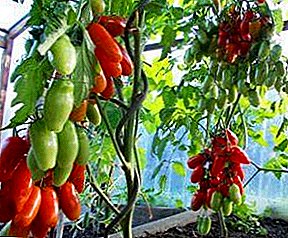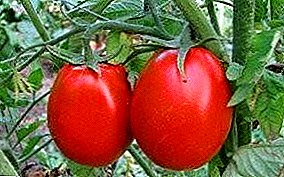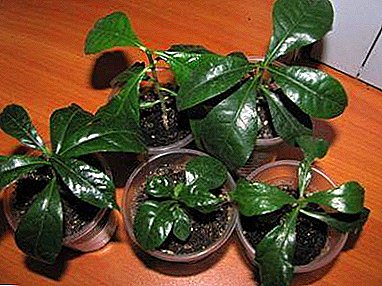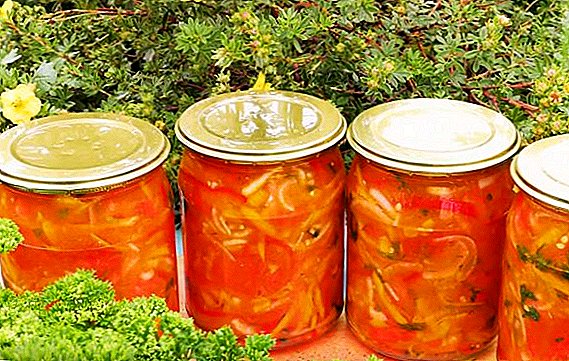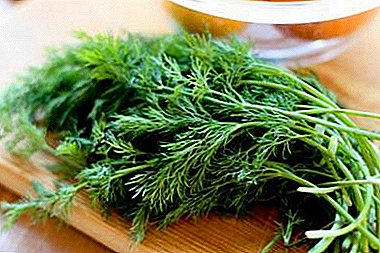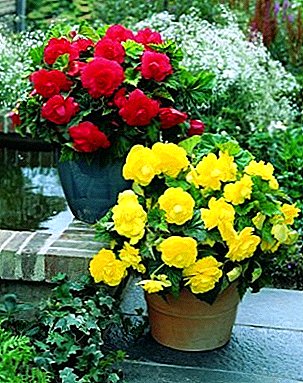
Winter storage of tubers is one of the problems arising from the cultivation of the Tuberous Begonia plant, which is popular in indoor and garden flower growing. So that she does not die in the rest period and does not get sick, you must follow the rules of detention during the winter period.
Secrets of preparation for winter storage
Proper storage of tuberous begonia in winter - prerequisite. If they are not respected, the tubers will plant a small amount of buds, and flowering will be scarce.
First of all, you must comply terms of extraction from soil. If he is late, waiting for the first frost, he may suffer. Tubers of this flower do not tolerate even short-term freezing. But you can not dig them before. As soon as the foliage begins to dry, the flower begins an active tuber mass and budding for the next flowering. Therefore, early extraction from the ground will reduce the number of flowers during the vegetative period.
Watch carefully for the condition of the aerial parts. As soon as all the leaves turn yellow and fall off - it is time to act. Do not use a large spade you can damage its tender roots. Not fallen stems gently cut with garden shears or shears.

After digging out of the ground, clean the tubers thoroughly. Dry them indoors with warm, dry air. If there is high humidity in the room, rotting can begin in the tubers. During the period of preparation for winter, the tubers ripen, this process Lasts 15-20 days.
Sometimes there are unexpected autumn frosts in the autumn, and the leaves of the plant immediately freeze. Mistakenly believe that the root part is also frozen. Most often during short frosts, the underground part remains intact. Dig out such specimens and try to keep them.
How to save the tuberous begonia in the winter at home?
Temperature at the wintering place should not exceed 9-10 degrees. This is a necessary condition for bookmark flower buds. Humidity at the same time need increased (70-80%). There are several ways to ensure this, depending on the conditions you have:
Basement or cellar
For this method it is necessary to prepare the container in which the tubers will be placed. This can be a cardboard box or a wooden box. It is recommended to pour on the bottom a layer of sand, peat or sawdust.
Experienced flower growers speak well of the use of modern vermiculite material for this purpose.
Vermiculite - mineral powder widely used in gardening and indoor floriculture. It does not rot and does not decompose under the influence of the atmosphere, therefore insects and bacteria do not breed in it. Tubers placed in it will be in a certain temperature regime with sufficient air supply. In addition, they will not be infected with diseases and pests. For storage of tubers vermiculite mixed with peat or sawdust.
Tubers are laid out in one layer on the prepared cushion so that they do not touch each other. From above the laid plants are covered with a layer of a mixture for storage. It should also cover the distances between tubers. Each copy should be literally surrounded by a cushion of filling mixture.
Fridge
In the absence of a basement or cellar, tubers can be stored in the refrigerator. The finished, dried material is placed in a bag, sprinkled with peat and vermiculite, or a mixture of sand and vermiculite. The package is necessary make holes for air access. Then the package is placed in the refrigerator.
If your refrigerator has enough space, you can put the tubers in the bottom box for storing vegetables, filling them with a mixture of peat as in the previous version. It is also convenient to use food containers. They put the tubers in them and fill them up just like in the boxes with a mixture of peat and vermiculite, or sawdust and peat. Ensure that the backfill mix is completely dry, otherwise the begonias will rot or be affected by the fungus.
How to keep a tuberous begonia in a potted winter in an apartment?

Previous storage methods are used for large, adult tubers. Young copies are small, and with such storage dry. It is recommended to store them by placing them in pots of earth. Dip the tubers into the ground, you can in several pieces in one pot, and put in a dry, cool room. Once or twice depending on the humidity of the surrounding air. Land with stored tubers needs to be moistened.
Wintering First Year Begonias
The storage of the first years obtained from the seeds is different, because the rest period is relative. The above-ground part of them does not die off in the fall, and they should spend the winter in pots.
Since the leaves of small tubers are preserved, they need light. But the temperature of the content should not exceed 15 degrees. Water the first year moderately to avoid rotting.
Inexperienced growers mistakenly do with young nodules as they do with large, mature ones. But this can not be done, because the first years grown from seeds continue to grow in the winter. If they are stored incorrectly, they will dry out.
Features of the rest period begonias room
A home-grown plant also needs winter storage. The difference is that the plant is not necessarily removed from the soil.
In the fall as soon as the stems begin to wither and dry, they sharply reduce the frequency of irrigation and the amount of water. The leaves, which have finally dried up, carefully cut and clean the pot in a dark, cool place. Such conditions are necessary for the plant to rest and gain strength for flowering in the next season.
No need to disturb the resting shrub: move it from place to place, replant. Check the status of the root system. It is only necessary to ensure that the earth does not dry out and slightly moisten it periodically. This is especially important during the heating operation, since the air in the apartments is dry and the tubers may dry out.
Well preserved plants on warmed balconies or under a balcony door. As well as garden begonia, room can be stored in the basement. Put it there right in the pot in which it was grown. To restrict light access, cover the pots with newspapers or thick cloth.
It is very important that the pot with the plant there was not too much light and the more direct sunlight. The plant will awaken ahead of time and will sprout, not having time to lay a sufficient number of flower buds.
Awakening Tuber
The wintering period ends in begonias in March and April. Remove the tubers from the wintering place and warm them in the room. You can also sprout them in wet peat or sand before planting in open ground. Before that, lower them for a while into the potassium permanganate solution.
If there are many buds on a large tuber. Before landing, it can be cut into pieces. Cut places process ash, sulfur or charcoal.
Young plants have long sprouts by spring, they need to be grafted and rooted in separate containers.
Compliance with these simple rules of storage will help you enjoy the summer lush and abundant flowering beauty begonias.
A photo
Next you can see a photo of a tuberous begonia:










